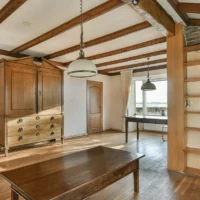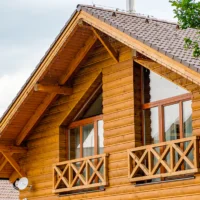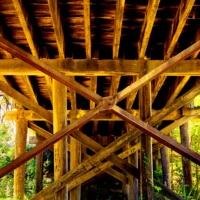Table of Contents
What Are Oak Porch Beams?
Definition & overview
Oak Porch Beams are the horizontal, load-bearing members that span the top of a porch opening or run around the perimeter of a porch roof. They transfer weight from rafters and roof coverings to vertical supports (posts) and ultimately to the foundation. In traditional timber framing, beams are typically joined to posts using mortise-and-tenon joinery secured with hardwood pegs, though steel connectors or concealed plates are also common in contemporary builds.
Because porches are semi-exposed environments, Oak Porch Beams are specified not just for appearance but for performance: they must handle roof loads, wind uplift, and seasonal movement while resisting moisture, UV, and insect activity. Standard sections vary widely—anything from 150×150 mm to 300×300 mm and larger—depending on span, loading, and design intent. Always have a qualified engineer or timber framer size and grade your beams for safety and compliance.
Difference between porch beams and decorative oak posts
It’s easy to mix up the terminology, so here’s the quick distinction:
- Porch beams are horizontal structural elements. They carry loads from above and distribute them to posts. If you remove an Oak Porch Beam, the porch roof would likely fail.
- Decorative oak posts (or cladding sleeves) are often non-structural. They may wrap around a steel or softwood column or simply sit in front of masonry to create the look of a timber frame. Decorative posts influence style, not structure.
In short, posts are vertical and may be structural or decorative; Oak Porch Beams are horizontal and designed to be structural unless specifically detailed as faux beams.
Why Choose Oak Porch Beams?
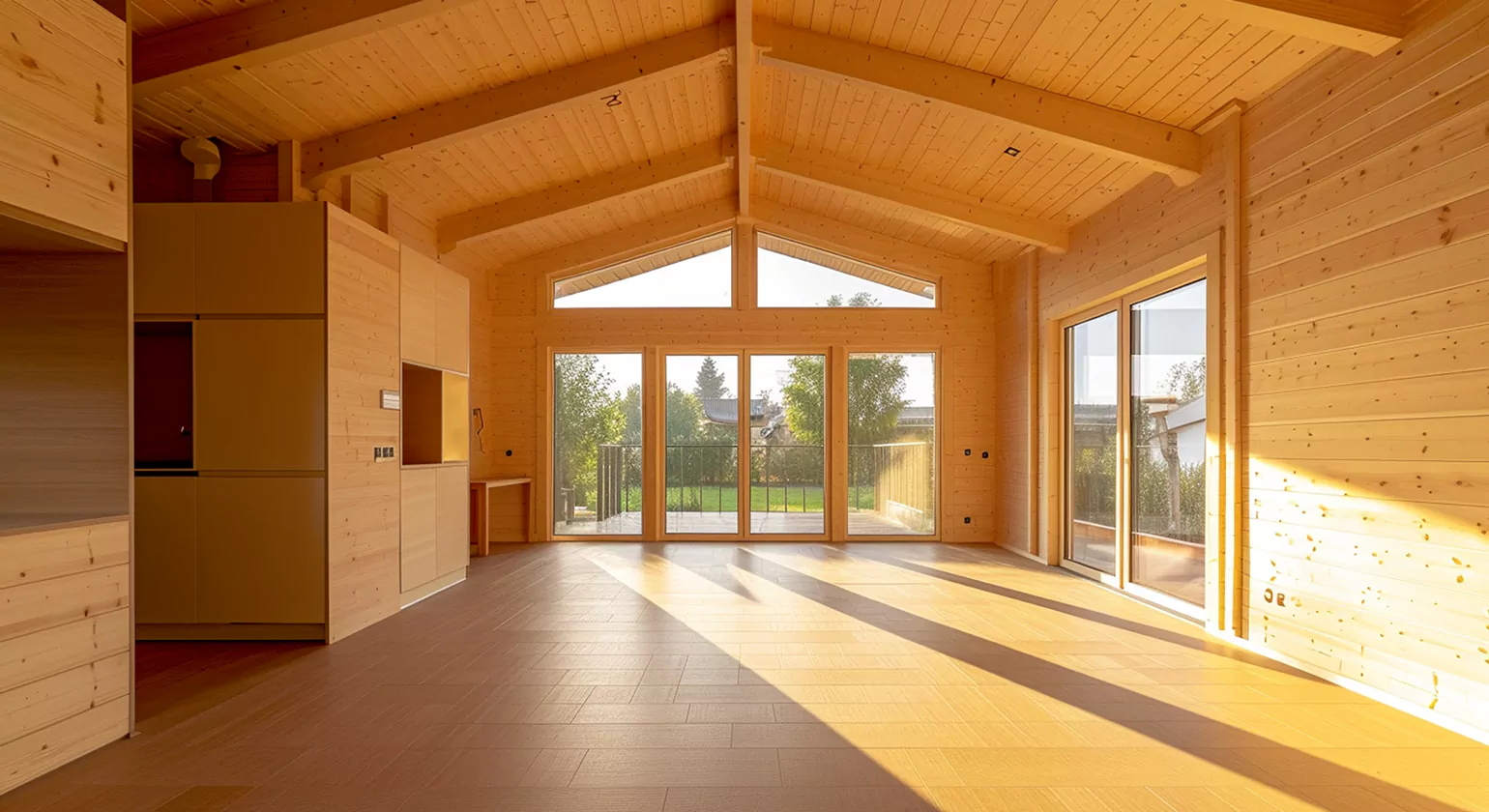
Choose Oak Porch Beams for unmatched outdoor durability, timeless curb appeal, and sustainably sourced, low-carbon structure that weathers beautifully and lasts for decades.
Durability & weather resistance
European oak is a dense, naturally durable hardwood with high tannin content. Those tannins make oak less attractive to many insects and contribute to excellent resistance to decay when detailing and maintenance are done correctly. Properly designed Oak Porch Beams can handle decades of exposure:
- Moisture tolerance: Oak copes well with intermittent wetting and drying common on porches. Green and air-dried beams will check (develop surface splits) as they season in place—this is normal and doesn’t typically compromise strength when sizes and joints are properly specified.
- Load-bearing stability: Oak’s density and compressive strength make it ideal for beams that must support roof structures, ceiling joists, or decorative trusses.
- Fire performance: While all wood is combustible, large oak sections char on the outside, which can slow internal burn and retain structural capacity longer than thin steel components that rapidly lose strength at high temperatures. (Your engineer will address any code-specific fire requirements.)
Timeless rustic appeal
From the first day it’s installed, Oak Porch Beams deliver character—cathedral grain, knots, ray fleck in quarter-sawn faces, and the tactile heft of real timber. Over time, uncoated oak weathers to a silvery-grey patina under UV exposure, a look that pairs perfectly with stone, brick, and natural landscaping. If you prefer the honey-gold tone, use UV-resistant oils or finishes formulated for exterior oak and reapply as directed.
Sustainability of oak wood
Choosing Oak Porch Beams can be a genuinely sustainable move:
- Renewable resources: Responsibly managed forests (look for FSC or PEFC certification) ensure regeneration and biodiversity.
- Low embodied carbon: Timber stores carbon captured during tree growth, contributing to lower embodied CO₂ compared to many man-made materials.
- Longevity & repairability: A well-detailed oak frame can be inspected, repaired, or even re-pegged; individual components can be replaced if ever necessary, extending service life.
Types of Oak Porch Beams
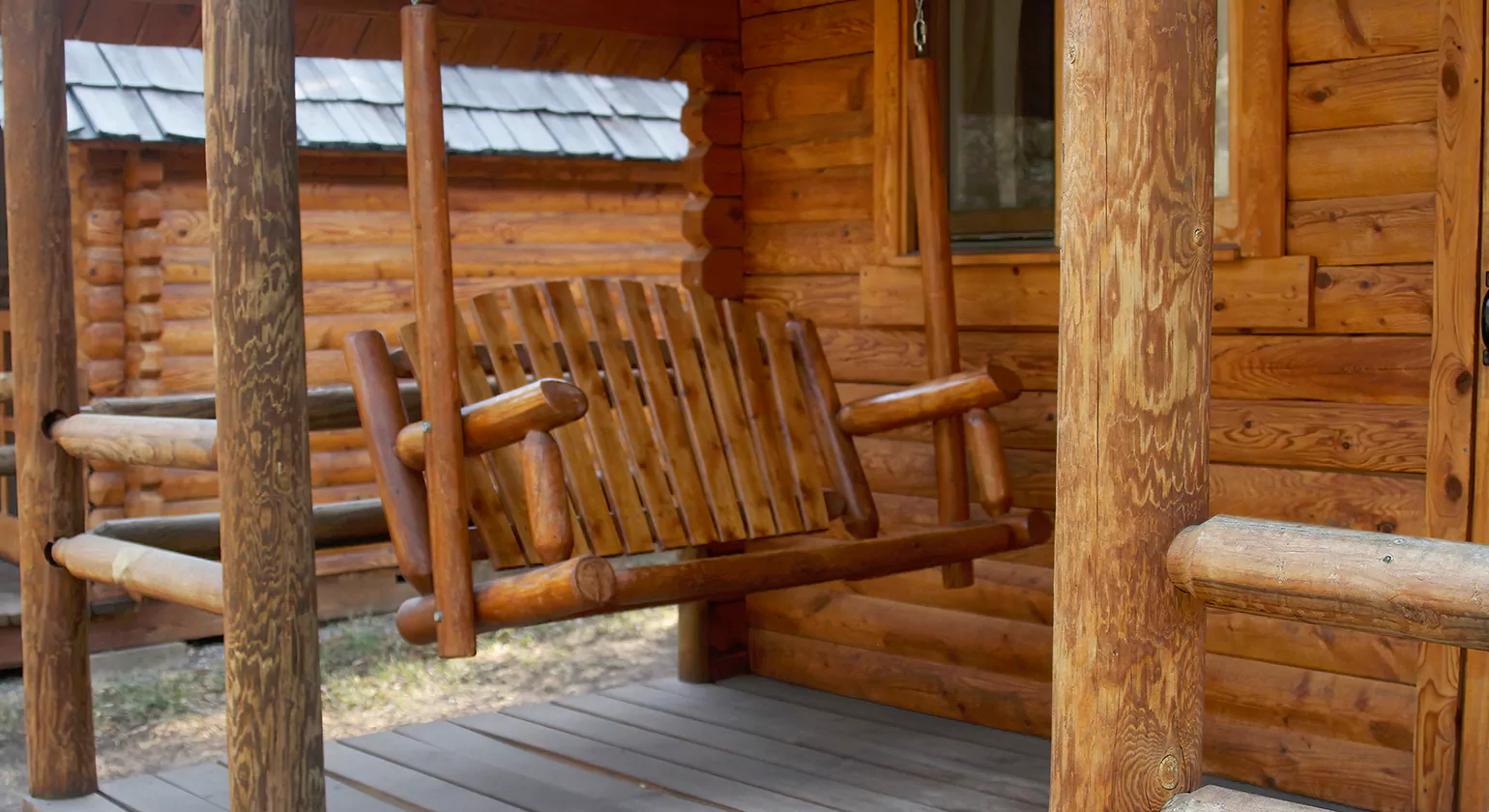
Different drying states of oak behave differently. The “best” Oak Porch Beams for your porch depend on span, detailing, budget, and how much natural movement you’re comfortable with. Here’s how the main options compare.
Green Oak vs. Air-Dried Oak vs. Kiln-Dried Oak
Green Oak (fresh-sawn, high moisture content)
- What it is: Recently milled oak with moisture often above 30%.
Pros
- Excellent workability for traditional joinery.
- More cost-effective and faster to source in larger sections.
- Naturally seasons in place, creating the classic checks and micro-movement that many people love.
Cons
- Expect movement: shrinkage across the grain, checks, and slight twisting are normal as it dries.
- Joints must be detailed to accommodate movement; fixings should allow for seasonal change.
Best for
Traditional porches where character and authenticity are prioritized; projects with robust detailing (drip edges, caps, and breathable finishes).
Air-Dried Oak (partially seasoned, mid moisture content)
What it is: Oak that has been stacked and dried naturally for months or years, typically reaching 18–25% moisture (varies by climate and section size).
Pros
- More dimensionally stable than green oak; reduced risk of major shrinkage.
- Still carries the classic oak character and finishes well
Cons
- Higher cost and longer lead times, especially for large sections.
- Some checking and movement will still occur outdoors.
Best for
Homeowners wanting a balance between stability and the organic look of oak; porches with tighter joinery tolerances or where cladding interfaces must stay neater.
Kiln-Dried Oak (engineered dryness, lower moisture content)
What it is: Oak dried in a kiln to target moisture levels, often 8–12% for interior stock; large exterior sections may be difficult to kiln-dry uniformly.
Pros
- Highest dimensional stability; good where precise fits or factory-made joinery are required.
- Better compatibility with metalwork or glazing where movement could be problematic.
Cons
- Significantly more expensive; fewer suppliers offer large kiln-dried structural sections.
- Outdoors, moisture cycling will still happen—expect some movement over time.
Best for
Smaller sections, beam wraps, or hybrid designs where timber interfaces with doors, windows, or metal components that demand tighter tolerances.
Quick selector
- Want traditional look and best value in big sections? Green Oak Porch Beams.
- Want a neater finish with reduced movement? Air-Dried Oak Porch Beams.
- Need precision for complex interfaces? Kiln-Dried Oak Porch Beams (where available in required sizes).
Detailing tips that apply to every type
- Keep timber off the ground: Use stainless shoes, stone plinths, or damp-proof details to avoid end-grain wicking.
- Shed water fast: Chamfer top arises, add drip grooves under exposed edges, and cap horizontal surfaces to prevent standing water.
- Ventilation: Allow air flow around beams; avoid boxed-in details that trap moisture.
- Choose the right fixings: Stainless steel (A2/A4) or non-ferrous fixings prevent black staining from oak tannins.
- Finishes: If finishing, pick breathable exterior oils formulated for oak; film-forming varnishes often peel under UV and moisture cycling.
Reclaimed Oak Beams: Pros & Cons
Reclaimed Oak Porch Beams are salvaged from barns, mills, or older structures and repurposed for new porches. They’re sought after for their story and distinctive look.
Pros
- Unmatched character: Centuries-old patina, tool marks, and a richly weathered surface you simply can’t fake.
- Sustainability: Extends the life of existing timber, keeping material in circulation and reducing demand for new logging.
- Stability: Many reclaimed beams have already completed the majority of their shrinkage, so large, sudden dimensional changes are less likely.
Cons
- Hidden defects: Checks that penetrate deeply, historic insect activity, internal decay, or shakes may require grading and remedial work.
- Embedded metal: Old nails, bolts, or spikes can damage tools and complicate joinery; scanning and careful preparation are essential.
- Sizing & documentation: Sections may not match your drawings, and provenance/structural grading documents may be limited. Engineering sign-off might be more complex.
- Supply variability: Matching multiple beams for consistency can be challenging.
When to choose reclaimed: If your project emphasizes heritage aesthetics and you’re prepared for extra inspection, machining, and potential engineering checks, reclaimed Oak Porch Beams can be spectacular. For tight schedules, strict grading requirements, or exact sizes, new green or air-dried beams are usually simpler.
Design Ideas & Styles for Oak Porches
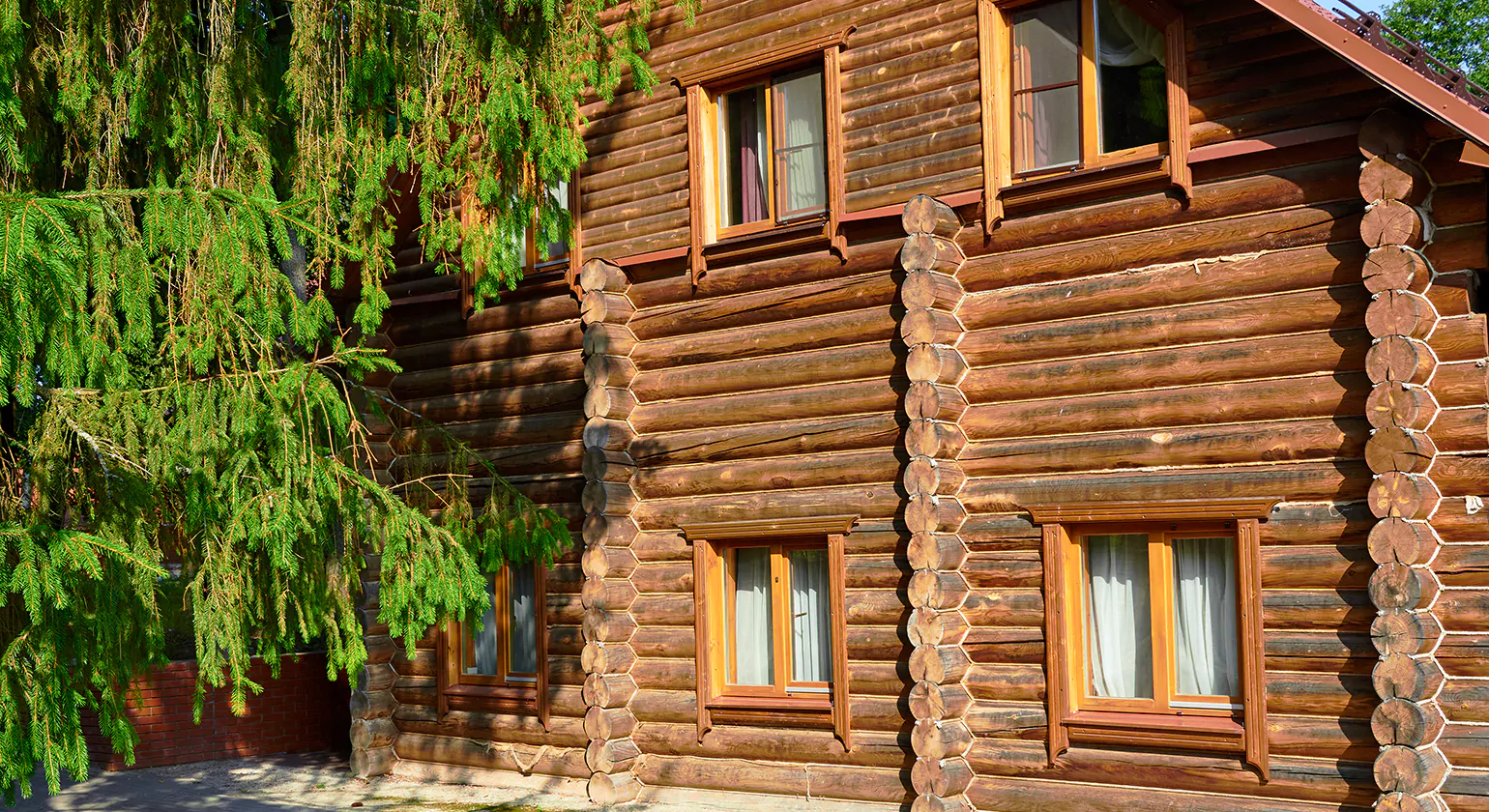
If you’re planning a statement entrance or a weather-sheltered sitting area, Oak Porch Beams give you the structure, beauty, and longevity you need. Below you’ll find style ideas, sizing guidance (answering “what size beams do I need for a porch?”), and a practical installation walkthrough. Use this as a planning blueprint before you speak with a timber farmer or engineer.
Traditional Oak Porches
Traditional designs showcase the craft and character of Oak Porch Beams:
- King-post and queen-post frames: A central king post or paired queen posts connect to Oak Porch Beams with pegged mortise-and-tenon joints, creating that unmistakable heritage silhouette.
- Curved or straight braces: Arched braces between posts and beams stiffen the frame, resist racking, and add visual rhythm.
- Chamfered edges and stopped chamfers: Softened arises help shed water and lend a hand-finished look.
- Stone plinths & lead flashings: Posts typically sit on stone plinths or stainless shoes, with the beam line carefully flashed to the wall for watertightness.
- Natural finish: Leaving Oak Porch Beams to silver gracefully is common; breathable exterior oils keep a honey-gold tone if preferred.
Traditional porches pair beautifully with brick, stone, and slate/tile roofs, and they put the joinery front-and-center—let the Oak Porch Beams be the star.
Modern Oak Porch Designs
Modern entrances treat Oak Porch Beams like sculptural elements—clean, minimal, and precise:
- Minimal profiles: Square-edged beams, slender braces, and concealed stainless connectors for a crisp aesthetic.
- Glazed infills: Slimline glazing between posts and under Oak Porch Beams creates a light, wind-screened vestibule without losing the timber expression.
- Flat or low-pitch canopies: Metal or single-ply membranes over simple rafters reduce visual weight; integrate hidden gutters.
- Mixed materials: Combine Oak Porch Beams with blackened steel, smooth render, or charred cladding for contrast.
- Precision finishes: Kiln-dried or well-seasoned air-dried oak helps keep lines tidy where tight interfaces (doors, glazing) matter.
Cottage-Style Porches with Oak Beams
For cottages and farmhouses, soften the geometry and layer textures:
- Lower eaves & generous overhangs: Cozy proportions that feel rooted to the building.
- Hand-hewn surfaces: Lightly relieved faces accentuate grain without going rustic-rough.
- Curved knee braces: Subtle sweeps between posts and Oak Porch Beams elevate charm and stiffness.
- Natural stone steps & planters: Ground the oak visually and practically.
- Picket or lattice accents: Railings and simple bench seating tucked beneath the beam line complete the cottage look.
DIY Oak Porch Beam Ideas
If you’re handy, there are manageable ways to incorporate Oak Porch Beams:
- Simple entrance canopy: Two posts, one Oak Porch Beam, and a modest rafter set create a compact rain-shelter above the door.
- Beam-and-bracket awning: A single beam fixed to the wall with heavy oak brackets; add short rafters for a slim canopy.
- Decorative beam wrap: Use kiln-dried oak cladding to wrap a steel lintel—get the look of Oak Porch Beams where full timber depth isn’t feasible.
- Prefabricated kit frames: Many suppliers offer pre-cut frames with labeled Oak Porch Beams and pegs—good for confident DIYers with lifting help.
- Outdoor bench or planter tie-ins: Repeat oak in adjacent elements to make a small porch feel intentional.
Tip: Even “simple” DIY projects with Oak Porch Beams are heavy. Plan safe lifting, temporary bracing, and weather protection during the build.
Oak Porch Beam Sizes & Specifications
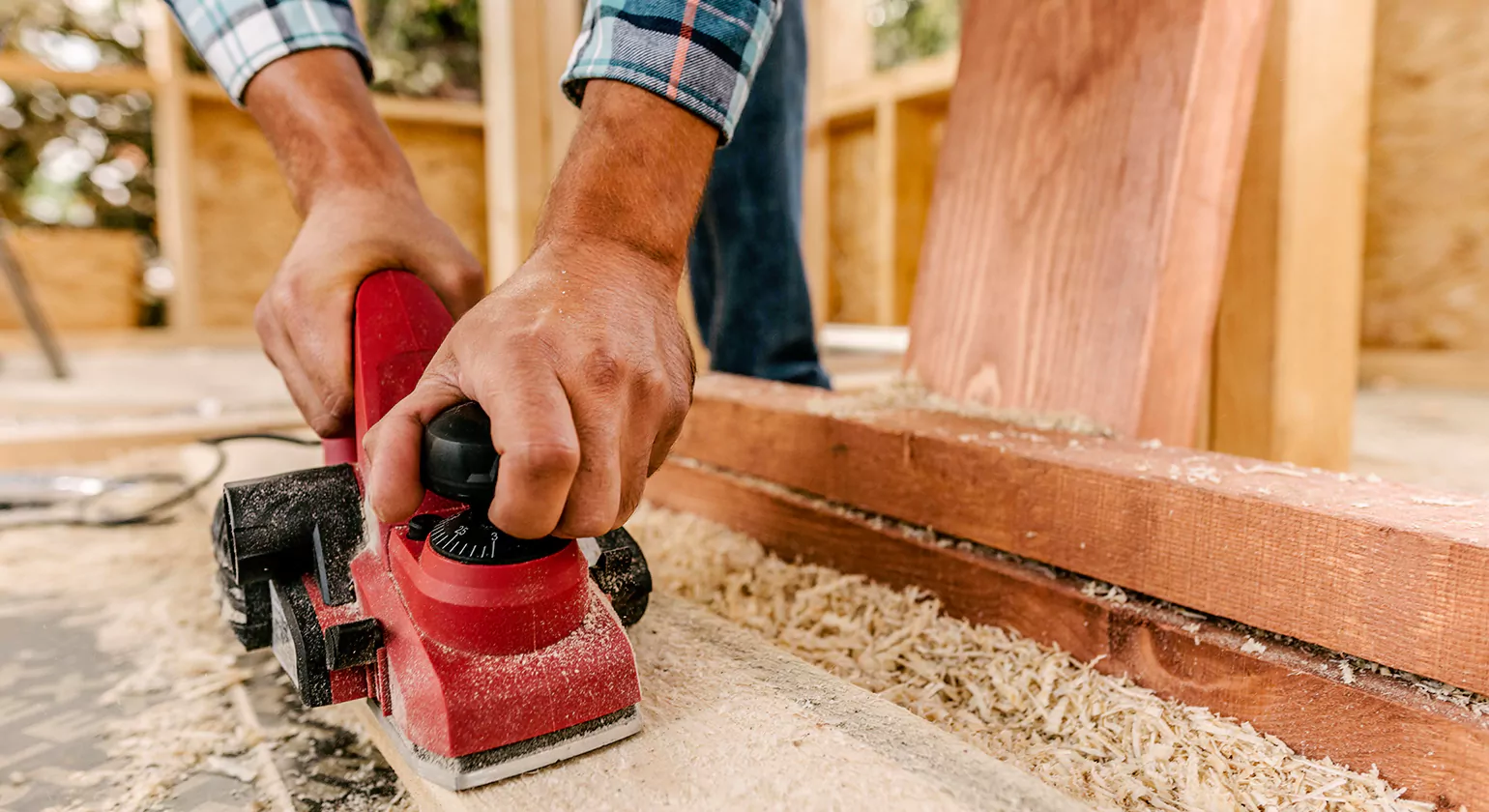
Every porch is different, and the correct size for Oak Porch Beams depends on span, roof load, snow/wind zone, spacing of posts, and local codes. Always confirm with a structural engineer or qualified timber farmer. That said, these typical starting points help you frame the conversation:
Standard sizes for Oak Porch Beams and Posts
- Posts: 150×150 mm (6×6) is common for light canopies; 200×200 mm (8×8) offers bolder presence and higher capacity.
- Primary Oak Porch Beams:
- 150×200 mm (6×8): Useful for short spans (~1.8–2.4 m / 6–8 ft) on light porch roofs.
- 200×200 mm (8×8): A popular all-rounder for spans around ~2.4–3.0 m (8–10 ft) depending on loads.
- 200×250 mm (8×10) or 225×300 mm (9×12): For longer spans (~3.0–3.6 m / 10–12 ft+) or heavier roofing.
- Rafters/purlins: Often 50–75 mm thick (2–3 in) with depth sized to span and roof system.
These ranges are indicative only. Timber grade, drying state (green vs air-dried), roof build-up (tiles vs metal), and bracing all shift the numbers.
Custom-cut beams
For wide porches, deep overhangs, or dramatic trusses, custom Oak Porch Beams solve both engineering and aesthetics:
- Oversize sections: 250×250 mm to 300×300 mm (10×10 to 12×12) create real presence and capacity.
- Profiles & detailing: Stopped chamfers, bead-and-quirk edges, or shallow arcs.
- Engineered combinations: Sistered beams or hidden steel flitch plates when timber depth must stay slim.
- Grading & certification: Ask for structural grading and species/source documentation; it matters for approvals and performance.
Spec details that boost longevity
- Bearing length: Give beams generous seat on posts (often ≥75 mm/3 in) and use housed joints where appropriate.
- End-grain protection: Drip grooves, caps, and DPC membranes under plates to prevent water wicking.
- Fixings: Stainless (A2/A4) or non-ferrous to avoid black tannin staining of Oak Porch Beams.
- Movement allowance: Slotted holes or breathable interfaces—oak moves with seasons.
Installation Guide: How to Build a Porch with Oak Beams

Step-by-step construction process
Design, approvals, and set-out
- Finalize drawings, spans, beam sizes, and connections for your Oak Porch Beams.
- Obtain permits if required.
- Mark post centers, beam lines, and roof projection with a laser; check door clearances and step heights.
Foundations and bases
- Prepare pads or a continuous footing per engineering specs.
- Install stainless post shoes or set stone plinths with DPC separation from masonry. Ensure bases are level and square—this dictates the accuracy of your Oak Porch Beams above.
Pre-cut joinery and dry fit
- Lay out mortises/tenons or connector positions on sawhorses.
- Cut housings for Oak Porch Beams to seat cleanly on posts; drill peg holes (offset slightly for draw-boring if using traditional pegs).
- Pre-oil hidden faces if finishing.
Erect posts
- Stand posts on bases, plumb them, and brace temporarily.
- Confirm diagonal measurements to keep the frame square.
Lift and seat Oak Porch Beams
- Hoist the primary Oak Porch Beams into position; seat into housings.
- Insert oak pegs or stainless fixings. Check the level across the beam run and adjust before final tightening.
Install braces and secondary members
- Fit knee braces tightly to remove racking.
- Add wall plate/ledger if the porch ties into the building; keep a ventilated cavity where required.
- Fix rafters or purlins to the Oak Porch Beams with appropriate connectors.
Roofing and weathering
- Deck and roof per specification (sarking boards for traditional look, or sheet goods for modern low-pitch roofs).
- Flash to the wall (lead or compatible flashing) and install drip edges.
- Add gutters and downpipes sized for the porch catchment.
Finishing
- Decide whether to oil Oak Porch Beams (for color retention) or leave to weather.
- Ease any sharp arrises, add drip grooves under horizontal members, and seal penetrations with oak-safe sealants.
- Remove temporary bracing after final checks.
Snag & maintain
- Expect minor checking as oak seasons; this is normal for Oak Porch Beams.
- Schedule periodic inspections, clear gutters, and re-oil if using a finish.
Tools & materials required
Tools: Circular or track saw, sharp chisels, mallet, drill/driver, auger bits for peg holes, impact wrench, level/laser, squares, clamps, ratchet straps, temporary props, ladders/tower, PPE (gloves, eye/ear protection), and—ideally—lifting assistance (hoist or two extra pairs of hands).
Materials: Posts and Oak Porch Beams (graded), braces, oak pegs/dowels, stainless bolts/coach screws, post bases or stone plinths with DPC, breathable exterior oil (optional), flashing (lead or compatible), roofing (tiles/metal/shingles), guttering, sealants compatible with oak, and fixings rated for exterior use.
DIY vs. Hiring a Professional
DIY can be cost-effective for compact canopies or kit frames where lifts are manageable, and connections are straightforward. It suits confident builders who understand temporary works, lifting safety, and weatherproofing details.
Hire a professional when:
- Spans exceed ~3.0 m (10 ft), roof loads are significant, or site exposure is high.
- Oak Porch Beams interface with glazing/doors where movement could cause leaks or binding.
- You need custom joinery, curved braces, or concealed steelwork.
- Local codes require calculations, inspections, or specific grading certificates.
Middle ground: Many homeowners commission a pre-cut, engineered frame (posts, braces, Oak Porch Beams) and handle roofing and finishes themselves. This preserves craftsmanship and control while reducing risk.
Maintenance & Care Tips for Oak Porch Beams
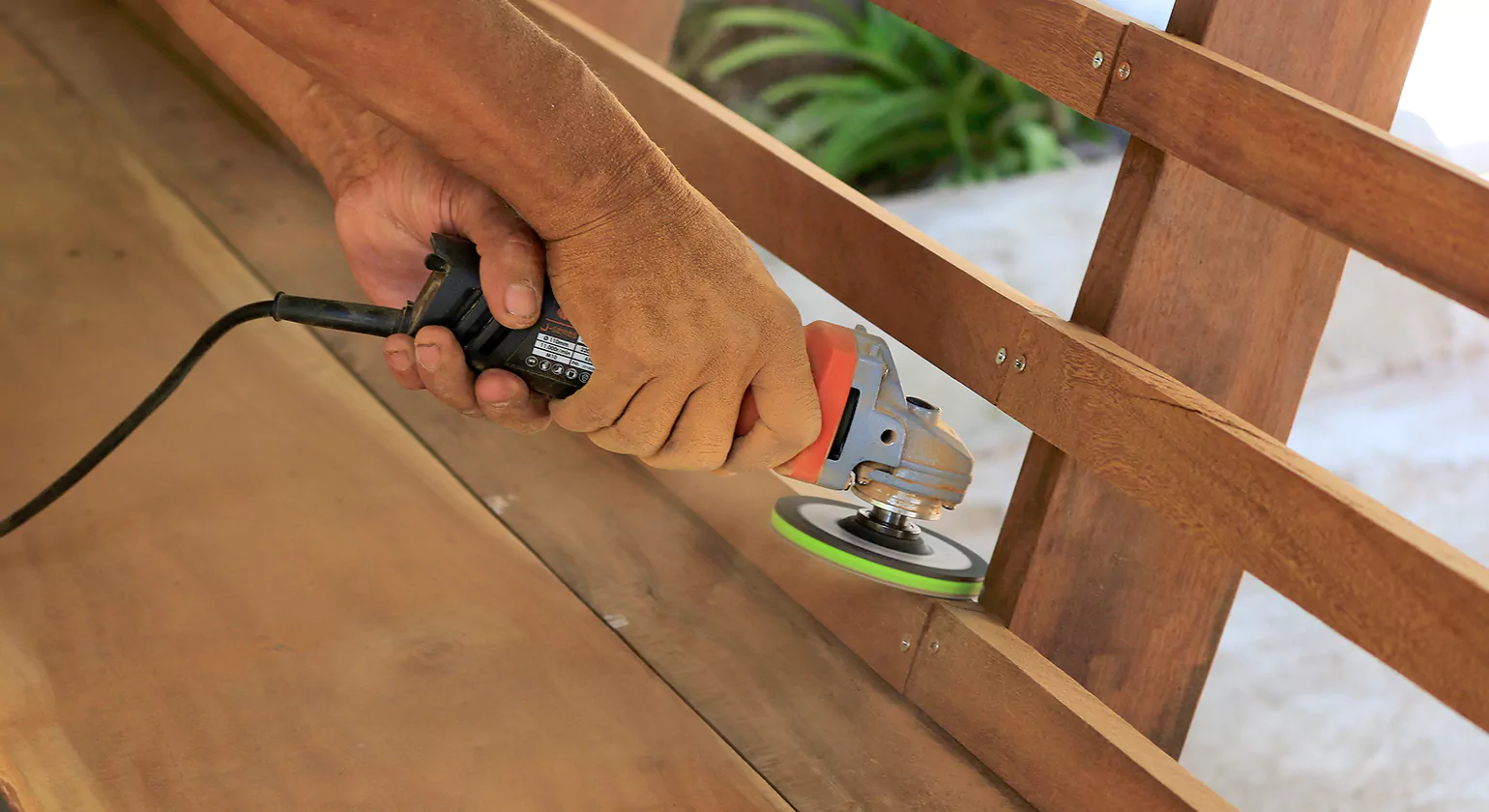
To maintain Oak Porch Beams, protect them with breathable oils or finishes, design details that shed water, and inspect regularly for cracks, ensuring longevity and beauty for decades.
Treating oak against weather damage
Oak is naturally durable, but porches expose beams to rain, UV light, and seasonal cycles. Smart treatment extends service life:
- Breathable oils: Exterior oils formulated for hardwoods penetrate deeply, slowing water uptake and reducing surface checking.
- UV protection: Oak turns silver-grey when exposed; if you prefer a honey tone, choose an oil with UV inhibitors.
- Avoid varnishes: Film-forming varnish crack and peel outdoors, trapping moisture. Always choose finishes designed for exterior oak.
- Water-shedding details: Chamfer horizontal surfaces, add drip grooves, and cap beam tops with lead or zinc to keep standing water away.
How to prevent cracks and splits
Checking (surface splits) is normal for Oak Porch Beams, especially in green or air-dried stock. But you can minimize severe cracking:
- Install correctly: Keep beams off the ground with stainless shoes or stone plinths. Moisture rising into end-grain causes deep splits.
- Allow ventilation: Avoid boxing beams tightly against masonry; airflow lets timber season evenly.
- Apply oil evenly: Treat all faces, especially end-grain, to slow drying.
- Accept character: Some cracks are inevitable—these don’t usually compromise structural integrity when beams are sized correctly.
Best oils & finishes for outdoor oak
- Danish oil with UV filters: Popular for a golden finish. Needs re-application yearly.
- Tung oil blends: Penetrating and water-resistant, though often darker in tone.
- Specialist exterior oak oils: Brands like Osmo, Rubio Monocoat, or Owatrol offer UV-protective oils designed specifically for oak outdoors.
- Clear sealers: If you want the natural grey patina but with added water repellence, choose a breathable clear product.
Maintenance schedule:
- Initial treatment: 2–3 coats at installation.
- Re-oil exposed faces every 12–18 months.
- Inspect annually for cracks, staining around fixings, and blocked drip details.
Cost of Oak Porch Beams in 2025
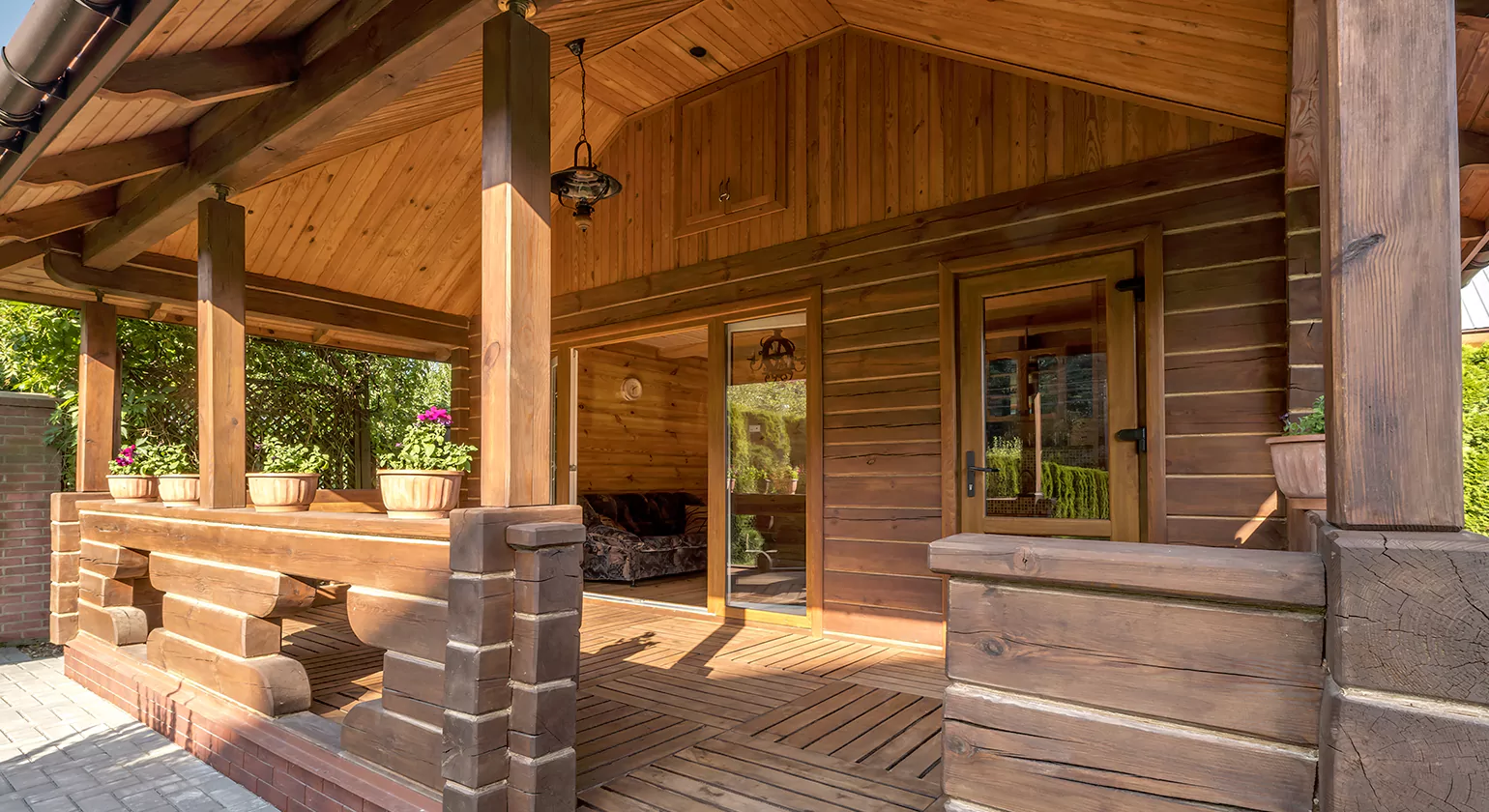
In 2025, Oak Porch Beams typically cost between £35–£60 per cubic foot (£1,250–£2,100 per cubic meter) depending on grade, drying method, and supplier. A small porch frame may cost £2,500–£5,000 in timber, while larger, bespoke designs can exceed £10,000.
Price per cubic foot / cubic meter
Green Oak:
- £35–£45 per cubic foot (approx. £1,250–£1,600 per m³)
- Most affordable and widely available.
Air-Dried Oak:
- £45–£60 per cubic foot (approx. £1,600–£2,100 per m³)
- Costs more due to storage and seasoning time.
Kiln-Dried Oak:
- £60+ per cubic foot (£2,100+ per m³) for large sections, if available.
- Rare in big beam sizes; premium option.
Reclaimed Oak:
- Variable—£30–£70 per cubic foot depending on patina, grading, and prep.
Factors affecting cost
- Beam size & volume: Larger sections cost disproportionately more due to log size and machining difficulty.
- Drying method: Air-dried and kiln-dried beams carry seasoning/storage costs.
- Grade & quality: Character grade (knots, splits) is cheaper than prime grade (cleaner, straighter).
- Finish & machining: Rough-sawn beams cost less than planned, chamfered, or pre-oiled stock.
- Transport: Heavy beams often require specialist delivery—factor in regional costs.
- Installation: Professional erection, joinery, roofing, and flashing often double or triple material cost.
Budget-friendly alternatives
If you want the look of Oak Porch Beams but need to save:
- Douglas fir or larch beams: Cheaper softwoods with reasonable outdoor durability; stain to mimic oak.
- Oak cladding on softwood cores: Achieve the oak look with less cost and weight.
- Reclaimed beams: Sometimes cheaper, though processing and grading may offset savings.
- Hybrid frames: Use oak only on visible members (front beams and posts), softwood or steel for hidden structure.
Where to Buy Oak Porch Beams
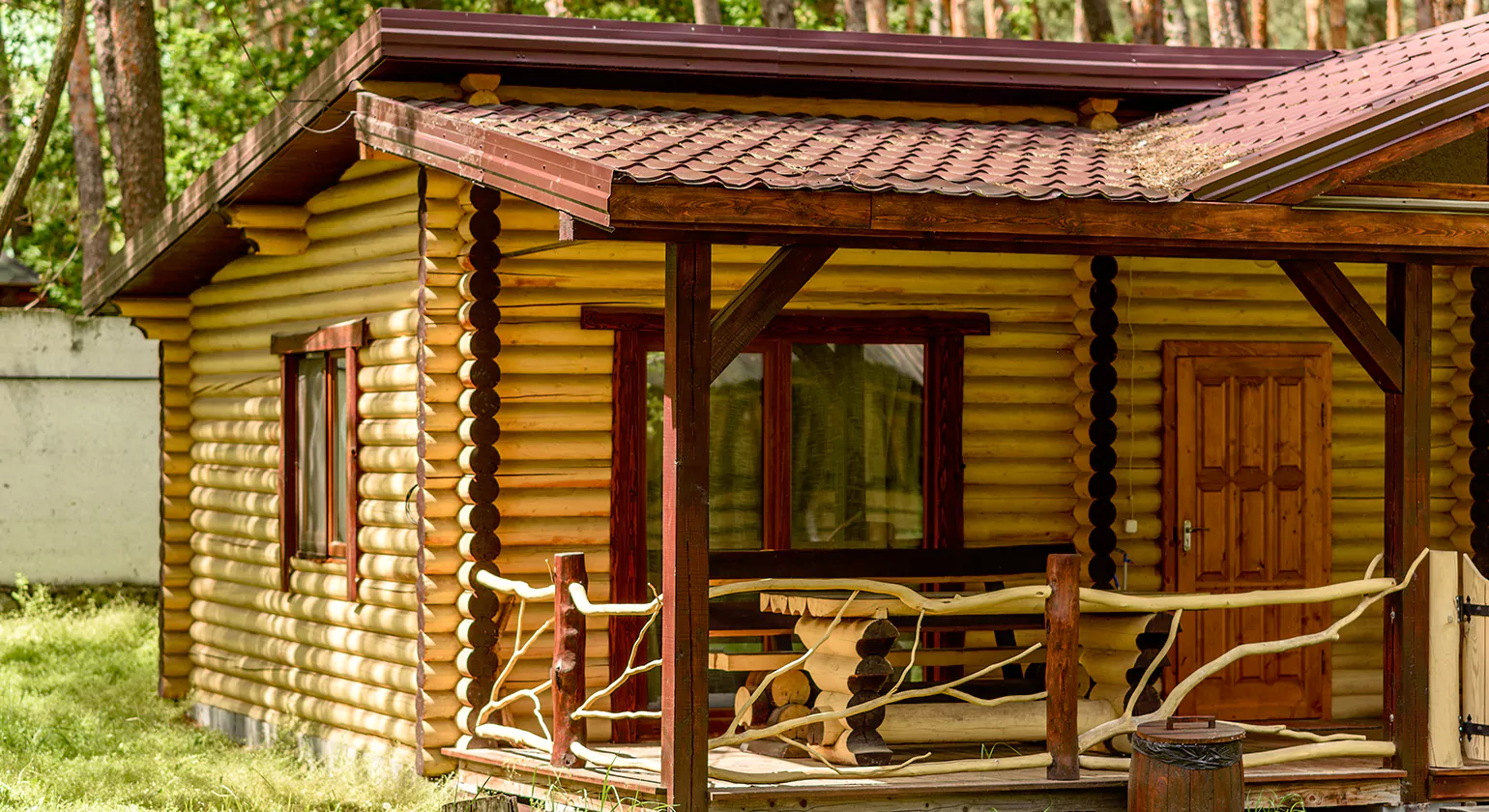
Buy Oak Porch Beams from local timber suppliers, online oak framing specialists, or reclaimed beam yards. Always request structural grading and certified sourcing.
Local timber suppliers
- Sawmills & timber yards: Many carries green oak beams in standard sizes, especially in regions with strong forestry industries (UK, Europe, North America).
- Advantages: Inspect beams before purchase, lower transport costs, ability to custom cut to order.
- Ask for: Grading certificates (C24, D30 equivalents), moisture content, and machining options (planned vs. rough-sawn).
Online oak framing specialists
- Dedicated suppliers: Many companies sell Oak Porch Beams online, offering pre-cut kits, bespoke joinery, and nationwide delivery.
- Advantages: Wide range of sizes engineered drawings, optional installation services.
- Popular with: Homeowners who want a complete porch kit ready to assemble, including posts, braces, and Oak Porch Beams.
- Consider: Delivery lead times, shipping costs for large beams, and whether the supplier provides installation support.
Buying reclaimed vs. new beams
Reclaimed Oak Porch Beams
- Pros: Unique patina, eco-friendly reuse, often cheaper than prime new oak.
- Cons: Variable sizes, potential defects, need for metal detection and surface re-dressing.
New Oak Porch Beams
- Pros: Predictable sizes, structural grading, easier engineering approvals, consistent supply.
- Cons: Higher carbon footprint than reclaimed, more expensive if kiln- or air-dried.
Tip: If sustainability is your priority, reclaimed is a great option—just ensure beams are structurally sound. If predictability and compliance matter most, stick with new Oak Porch Beams.
Conclusion
Oak Porch Beams are absolutely worth it if you’re seeking a combination of structural strength, timeless design, and long-term value. From traditional and cottage-style porches to sleek modern entrances, oak offers unmatched versatility and character, weathering gracefully over time while adding curb appeal and real estate value. Though initial costs can be higher than softwood or steel alternatives, the durability, sustainability, and low maintenance of oak make it a long-term investment that often outlasts cheaper substitutes. Whether you choose green, air-dried, kiln-dried, or reclaimed timber, sourcing quality beams, sizing them correctly, and caring for them with breathable finishes ensures your porch will remain a stunning focal point for decades. In short, Oak Porch Beams are a worthwhile investment for homeowners who want beauty, durability, and sustainability in one timeless package.
Know more >>> Log Cabin Porch Designs for Every Season
FAQ's
1. Do oak beams crack over time?
Yes, it’s normal for Oak Porch Beams—especially green or air-dried oak—to develop surface cracks (called checking) as they season outdoors. These splits are part of oak’s natural character and rarely affect structural performance when beams are correctly sized and detailed.
2. How long do oak porch beams last?
With proper installation, detailing, and minimal maintenance, Oak Porch Beams can last 50–100 years or more. Oak’s natural tannins make it highly resistant to decay, and with protective finishes and water-shedding design, longevity is significantly increased.
3. Can you paint or stain oak porch beams?
Painting solid oak is generally not recommended, as it can trap moisture and cause peeling. Instead, use breathable exterior oils, stains, or UV-protective finishes designed for oak. These allow the wood to move naturally while offering color retention and protection against weathering.
4. Do I need planning permission for an oak porch?
In many cases, small porches built with Oak Porch Beams fall under permitted development rights. However, larger porches, listed buildings, or properties in conservation areas often require planning permission. Always check with your local planning authority before starting construction.
5. What’s the best type of oak for porch beams?
Green oak is the most cost-effective and traditional choice, air-dried oak offers greater stability, and kiln-dried oak is best where precise tolerances are required. Reclaimed oak beams are another option if you want a weathered, rustic look with added sustainability.
6. How much does an oak porch cost in 2025?
The cost depends on size, beam type, and finish. On average, Oak Porch Beams range from £35–£60 per cubic foot. A small porch may cost £2,500–£5,000, while larger, more complex oak porches can exceed £10,000 including installation.






